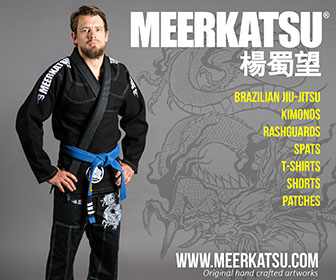I have just signed up to compete at The 2nd Open Grab and Pull in Brighton on the 4th April. It'll be my first BJJ rules competition (I have previously competed at 'groundfighting' comps, organised by my Trad JJ association before). I chose this as my debut as it had great reviews from participants last year and is not too far away.
I'm pretty nervous but I am also excited. Despite over 5 years of BJJ training, I had a number of insecurities about competing which I think I have overcome. But here they were as follows:
1. I'm scared of getting beat.
Yep this is the big one. No matter how awesome you are in class, getting beaten publicly is a hard cross to bear for some. But I get beaten in the class all the time. Doing so publicly should be nothing new. So this is a rubbish excuse - cross out that box for me then.
2. I don't have enough time to train up for the comp.
This is a big problem for me as I am pretty busy with kids, job and running my own trad JJ club. But this is not really going to change much for the forseeable future so it's now or never really. Not a good excuse - cross out that box again.
3. There's no one in my weight class so no point going.
It's true, I don't see many blue belt roosters compete, let alone senior 1 roosters. But if I am 'lucky' maybe I'll get a fight in the next weight up or compete against same weight women. I don't have a problem with either solution, so cross out that box again!
4. I'm too nervous I'll look like an idiot.
This is a weird one but I don't want to be the sucker who gets submitted in 1 second, or the recipient of a flying armbar or something that makes me look really crap. Having said that, such incidents are not all that common and I can at least draw on my trad JJ competition experience a bit.
I'm sure there are lots of positives to competing. Stephen Kesting has a fantastic and inspirational article about the pros to competing here.
And regarding my rooster or super feather conundrum (do I starve? do I bulk up?), I found this quote, by black belt whizz Felipe Costa in this interview.
“I think the roosterweight category and super featherweight are the most unforgiving ones in Jiu-Jitsu. We have tons of super technical athletes, but for being so light they end up being left unknown. I understand that’s not just in Jiu-Jitsu, but also in other combat sports, like boxing, judo, mma, etc… But it’s lamentable,”
YEAH! Let's hear it for the little guys out there!
I'm pretty nervous but I am also excited. Despite over 5 years of BJJ training, I had a number of insecurities about competing which I think I have overcome. But here they were as follows:
1. I'm scared of getting beat.
Yep this is the big one. No matter how awesome you are in class, getting beaten publicly is a hard cross to bear for some. But I get beaten in the class all the time. Doing so publicly should be nothing new. So this is a rubbish excuse - cross out that box for me then.
2. I don't have enough time to train up for the comp.
This is a big problem for me as I am pretty busy with kids, job and running my own trad JJ club. But this is not really going to change much for the forseeable future so it's now or never really. Not a good excuse - cross out that box again.
3. There's no one in my weight class so no point going.
It's true, I don't see many blue belt roosters compete, let alone senior 1 roosters. But if I am 'lucky' maybe I'll get a fight in the next weight up or compete against same weight women. I don't have a problem with either solution, so cross out that box again!
4. I'm too nervous I'll look like an idiot.
This is a weird one but I don't want to be the sucker who gets submitted in 1 second, or the recipient of a flying armbar or something that makes me look really crap. Having said that, such incidents are not all that common and I can at least draw on my trad JJ competition experience a bit.
I'm sure there are lots of positives to competing. Stephen Kesting has a fantastic and inspirational article about the pros to competing here.
And regarding my rooster or super feather conundrum (do I starve? do I bulk up?), I found this quote, by black belt whizz Felipe Costa in this interview.
“I think the roosterweight category and super featherweight are the most unforgiving ones in Jiu-Jitsu. We have tons of super technical athletes, but for being so light they end up being left unknown. I understand that’s not just in Jiu-Jitsu, but also in other combat sports, like boxing, judo, mma, etc… But it’s lamentable,”
YEAH! Let's hear it for the little guys out there!
Losing my BJJ comp virginity
I have just signed up to compete at The 2nd Open Grab and Pull in Brighton on the 4th April. It'll be my first BJJ rules competition (I ...












